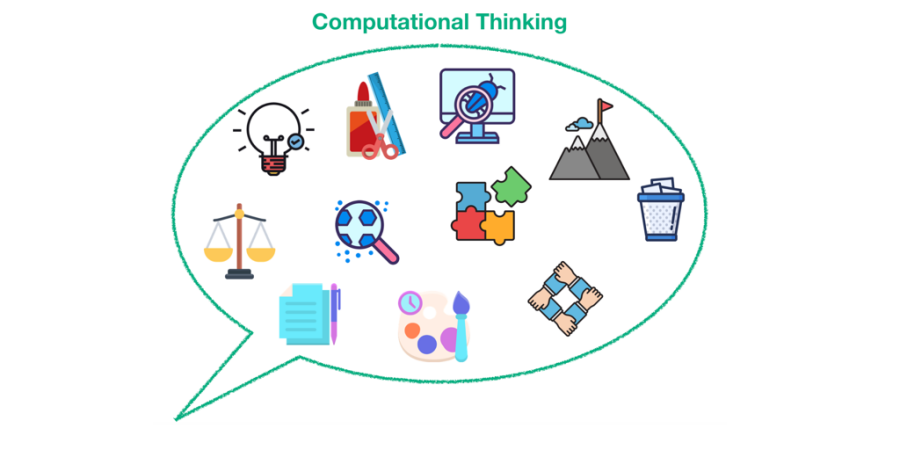

### The Power of Computational Thinking in Problem Solving
In the digital age, where technology permeates every aspect of life, *computational thinking* has become an essential skill. It is more than just a method for coding or programming; it is a way of thinking that helps break down complex problems into manageable parts. From everyday decision-making to cutting-edge research, computational thinking is transforming how we approach problems, paving the way for innovation.
#### What is Computational Thinking?
Computational thinking refers to the process of approaching a problem in a structured, logical way, much like how a computer processes tasks. It involves formulating problems in such a manner that solutions can be represented as a series of steps, which a machine (or human) can follow. The concept, popularized by Jeanette Wing in 2006, highlights four key pillars:
1. **Decomposition**:
Breaking down complex problems into smaller, more manageable components.
2. **Pattern Recognition**:
Identifying similarities or patterns within these smaller problems to make problem-solving more efficient.
3. **Abstraction**:
Focusing on the important information while ignoring irrelevant details, simplifying the problem.
4. **Algorithms**:
Developing step-by-step solutions or rules to solve the problem.
#### Why is Computational Thinking Important?
Computational thinking is essential because it provides a framework for problem-solving in the modern world. Whether you are coding an app, analyzing data, or designing a business strategy, computational thinking helps break down the complexity into understandable parts. Its emphasis on logical analysis and creativity makes it valuable across disciplines, including education, healthcare, science, and finance.
For instance, in data science, computational thinking helps in the process of cleaning, organizing, and analyzing vast datasets. Similarly, in education, students equipped with this thinking model are better prepared to tackle challenging subjects like mathematics, physics, and computer science.
#### Applications in Different Fields
1. **Education**:
Teaching computational thinking in schools helps students develop a problem-solving mindset. It encourages critical thinking, which can be applied across subjects—from science to literature. Coding programs are increasingly integrated into the curriculum as tools for teaching computational thinking principles.
2. **Healthcare**:
Computational thinking is transforming healthcare by optimizing medical procedures and making sense of large datasets. For example, when analyzing patient records for patterns related to disease, doctors and researchers use decomposition and pattern recognition to draw meaningful insights.
3. **Business and Industry**:
In business, companies use computational thinking to improve decision-making, streamline processes, and create innovative products. For example, pattern recognition helps businesses identify trends in consumer behavior, while algorithms are employed in optimizing supply chains.
4. **Artificial Intelligence and Machine Learning**:
These fields rely heavily on computational thinking. Developing intelligent systems requires breaking down complex tasks (like image recognition) into smaller, solvable parts. Pattern recognition and algorithm development are core components of creating AI models that can learn and adapt over time.
#### Challenges of Computational Thinking
While computational thinking is a powerful approach, it is not without its challenges. One key issue is the potential for oversimplification. In some cases, breaking down a problem can result in losing sight of important nuances or context. Additionally, for those new to the concept, learning to think in a computational way can be difficult, as it requires a shift from traditional ways of solving problems.
Another challenge is ensuring equitable access to computational thinking education. With technology advancing rapidly, it is crucial to bridge the digital divide and ensure that all students, regardless of socioeconomic status, have the opportunity to develop these skills.
#### Conclusion
In an increasingly digital world, computational thinking is an invaluable tool. It empowers individuals to solve complex problems logically and creatively, driving innovation across diverse fields. As we continue to integrate technology into all aspects of life, nurturing computational thinking skills will be critical to preparing future generations for the challenges and opportunities ahead. By embracing this way of thinking, we can navigate complexity, find solutions to pressing global problems, and shape a better, more efficient world.
